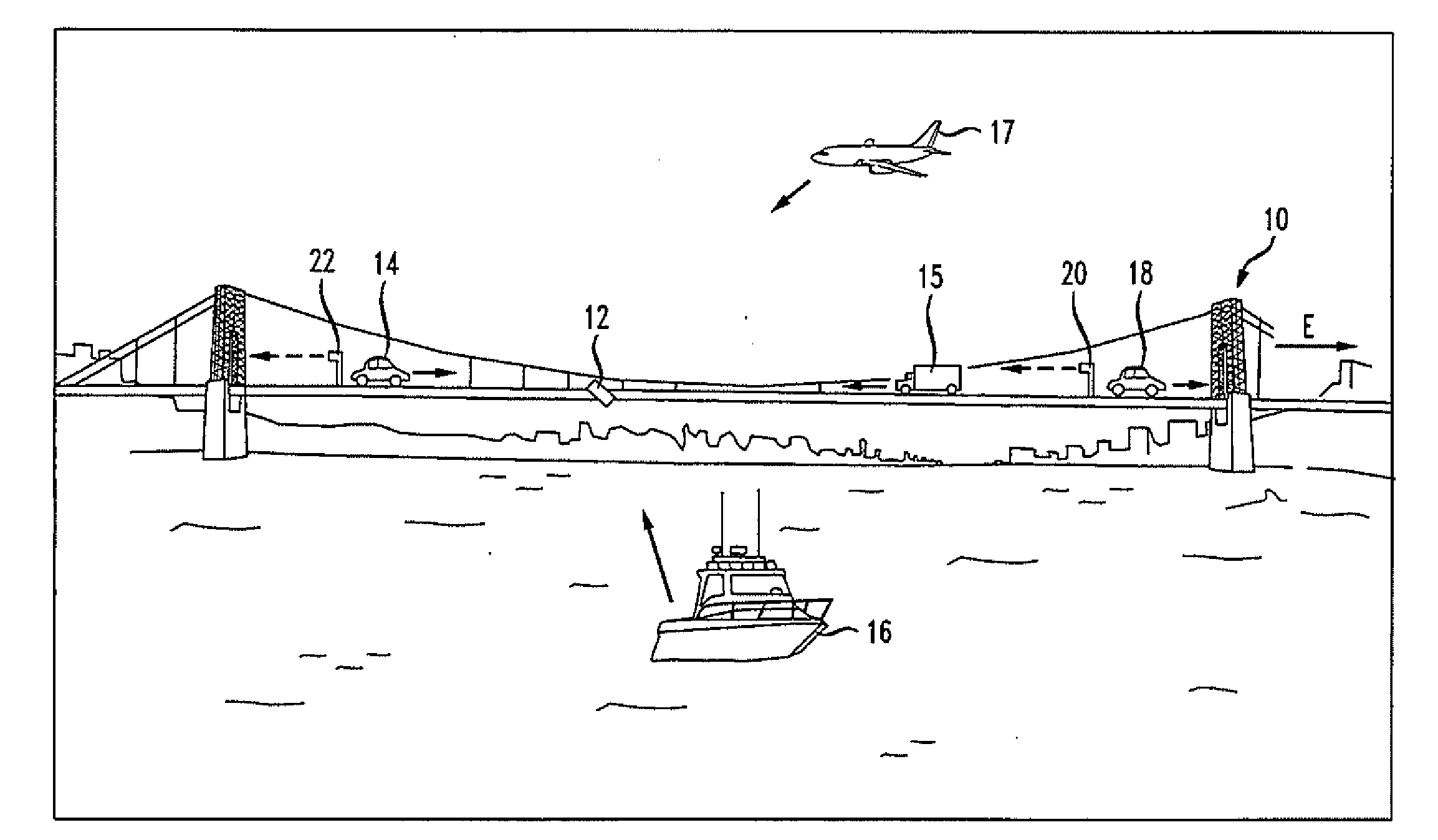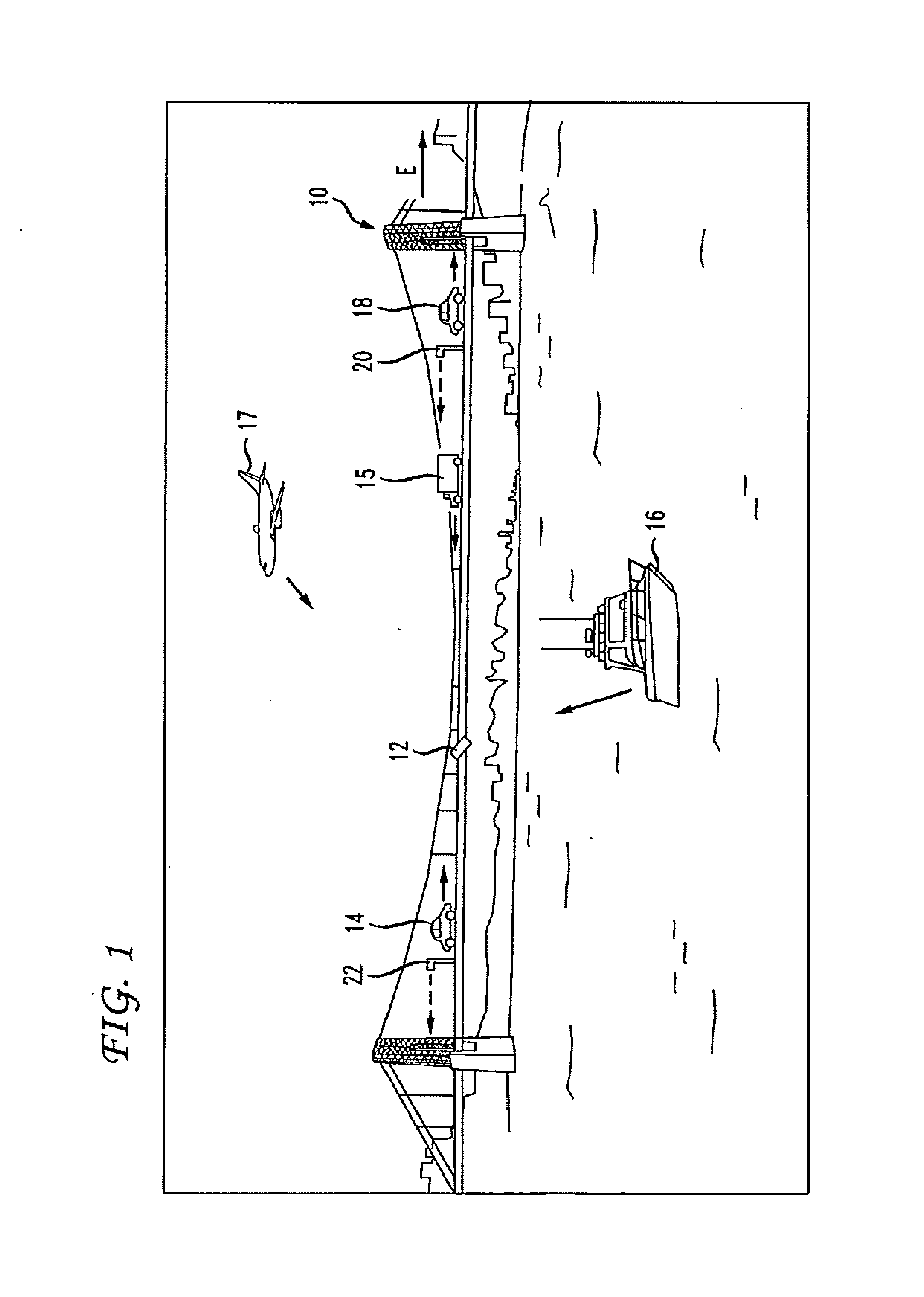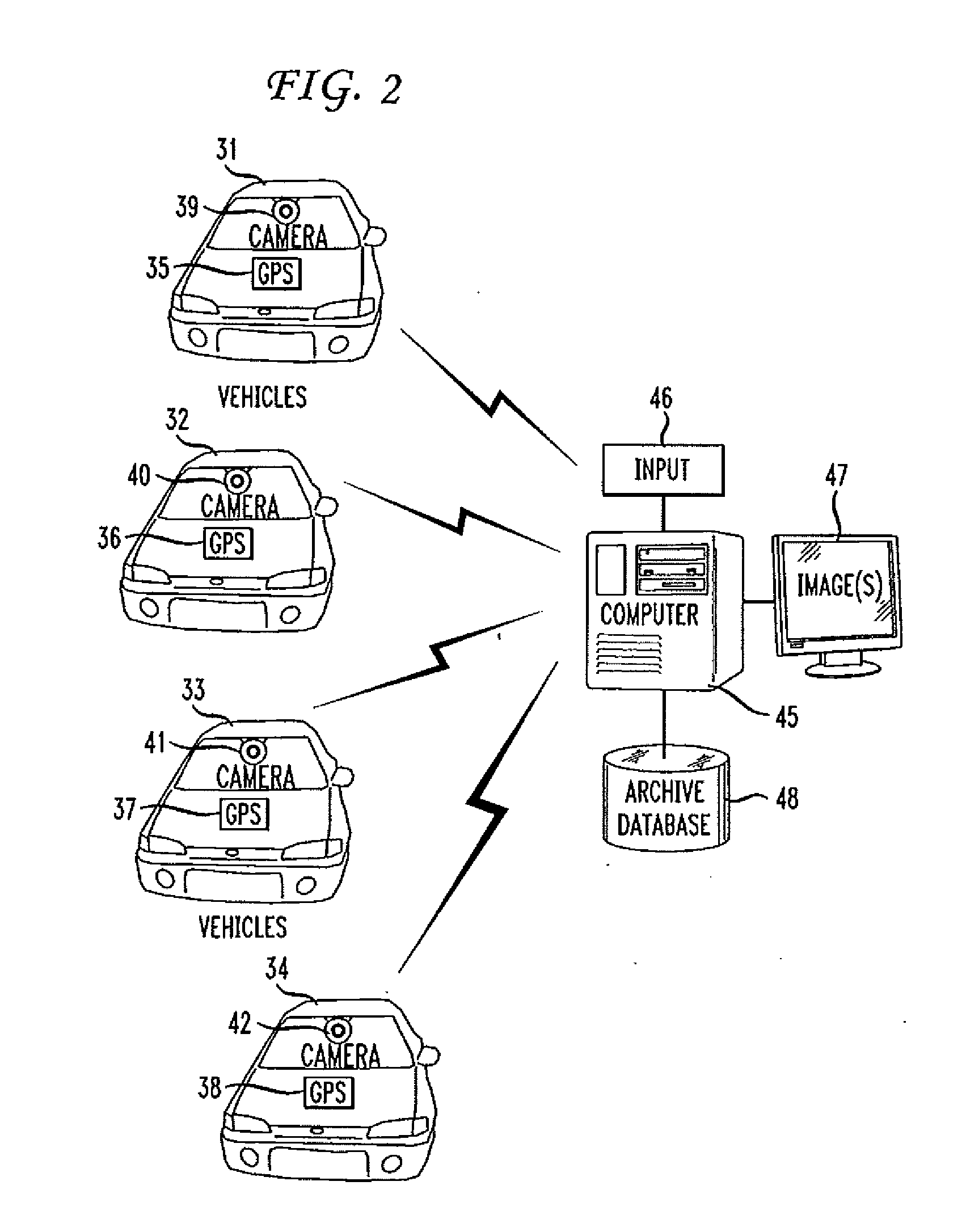Image Data Collection From Mobile Vehicles With Computer, GPS, and IP-Based Communication
a mobile vehicle and image data technology, applied in the field of image data retrieval and utilization, can solve the problems of inability to monitor locations, tapes need to be changed regularly, picture quality is typically grainy, etc., and is not useful as real-time information to possibly prevent a crime or terrorist a
- Summary
- Abstract
- Description
- Claims
- Application Information
AI Technical Summary
Benefits of technology
Problems solved by technology
Method used
Image
Examples
Embodiment Construction
[0022]Soon, many, if not all, mobile vehicles will have some type of communication system e.g., wireless internet access, as well as GPS or other type of location capability. The present invention takes advantage of mobile vehicles that have cameras, GPS, and communication systems, to transmit time, space, and video information. (GPS will be discussed for convenience, but any appropriate location devices, such as an electronic compass, triangulation device, radar, sonar, or combination of location devices is contemplated.) The information is retrieved, filtered, and filed and may be compared with information taken from other mobile vehicles to provide a set of images of for example a specified location. The information may also be compared with archived information, for example, to find objects in real-time images that are not present in the archived images.
[0023]The present invention provides the ability for interested agencies, e.g. the Port Authority, Federal Transportation Agenc...
PUM
 Login to View More
Login to View More Abstract
Description
Claims
Application Information
 Login to View More
Login to View More - R&D
- Intellectual Property
- Life Sciences
- Materials
- Tech Scout
- Unparalleled Data Quality
- Higher Quality Content
- 60% Fewer Hallucinations
Browse by: Latest US Patents, China's latest patents, Technical Efficacy Thesaurus, Application Domain, Technology Topic, Popular Technical Reports.
© 2025 PatSnap. All rights reserved.Legal|Privacy policy|Modern Slavery Act Transparency Statement|Sitemap|About US| Contact US: help@patsnap.com



